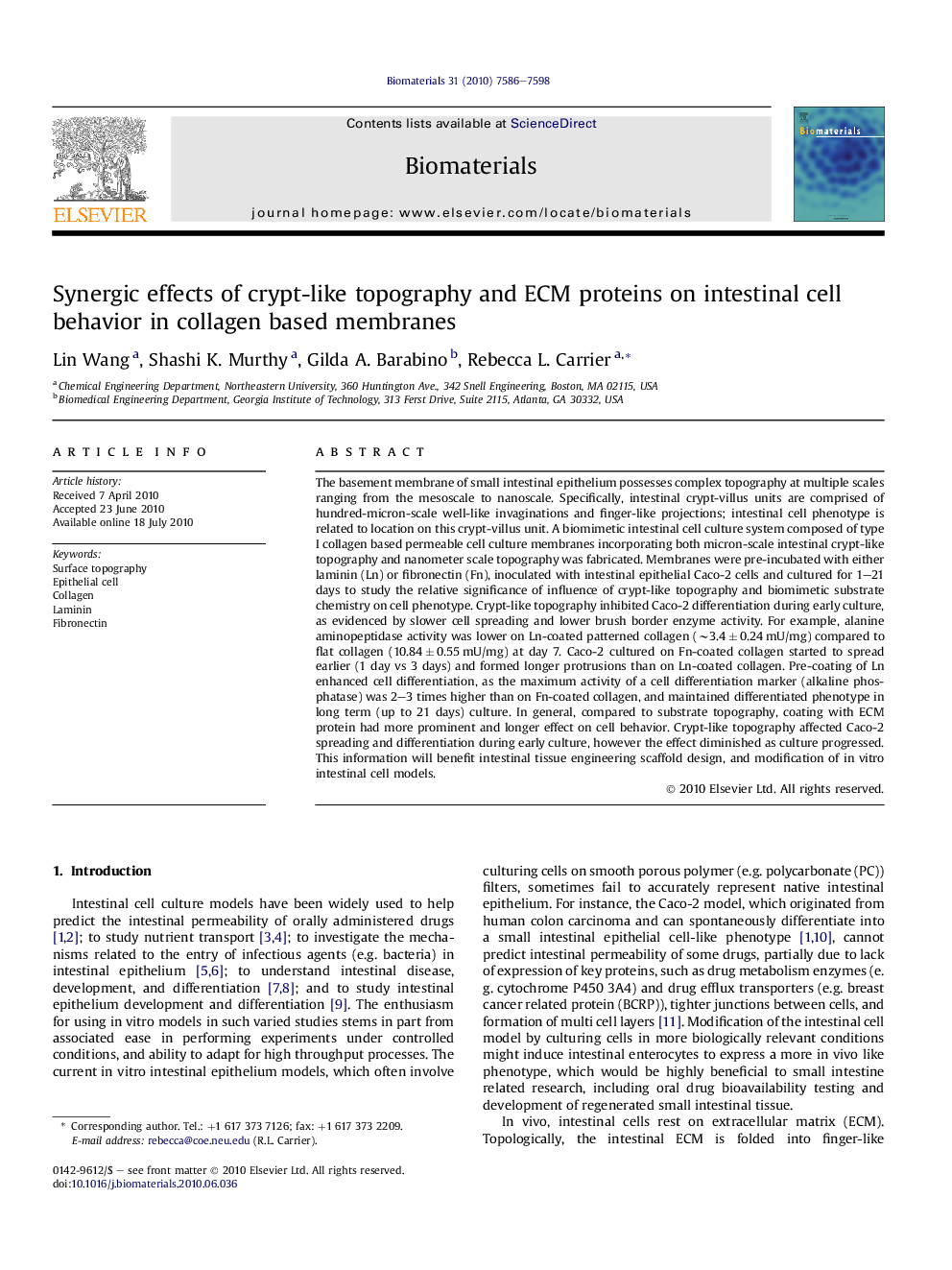| Article ID | Journal | Published Year | Pages | File Type |
|---|---|---|---|---|
| 7866 | Biomaterials | 2010 | 13 Pages |
The basement membrane of small intestinal epithelium possesses complex topography at multiple scales ranging from the mesoscale to nanoscale. Specifically, intestinal crypt-villus units are comprised of hundred-micron-scale well-like invaginations and finger-like projections; intestinal cell phenotype is related to location on this crypt-villus unit. A biomimetic intestinal cell culture system composed of type I collagen based permeable cell culture membranes incorporating both micron-scale intestinal crypt-like topography and nanometer scale topography was fabricated. Membranes were pre-incubated with either laminin (Ln) or fibronectin (Fn), inoculated with intestinal epithelial Caco-2 cells and cultured for 1–21 days to study the relative significance of influence of crypt-like topography and biomimetic substrate chemistry on cell phenotype. Crypt-like topography inhibited Caco-2 differentiation during early culture, as evidenced by slower cell spreading and lower brush border enzyme activity. For example, alanine aminopeptidase activity was lower on Ln-coated patterned collagen (∼3.4 ± 0.24 mU/mg) compared to flat collagen (10.84 ± 0.55 mU/mg) at day 7. Caco-2 cultured on Fn-coated collagen started to spread earlier (1 day vs 3 days) and formed longer protrusions than on Ln-coated collagen. Pre-coating of Ln enhanced cell differentiation, as the maximum activity of a cell differentiation marker (alkaline phosphatase) was 2–3 times higher than on Fn-coated collagen, and maintained differentiated phenotype in long term (up to 21 days) culture. In general, compared to substrate topography, coating with ECM protein had more prominent and longer effect on cell behavior. Crypt-like topography affected Caco-2 spreading and differentiation during early culture, however the effect diminished as culture progressed. This information will benefit intestinal tissue engineering scaffold design, and modification of in vitro intestinal cell models.
